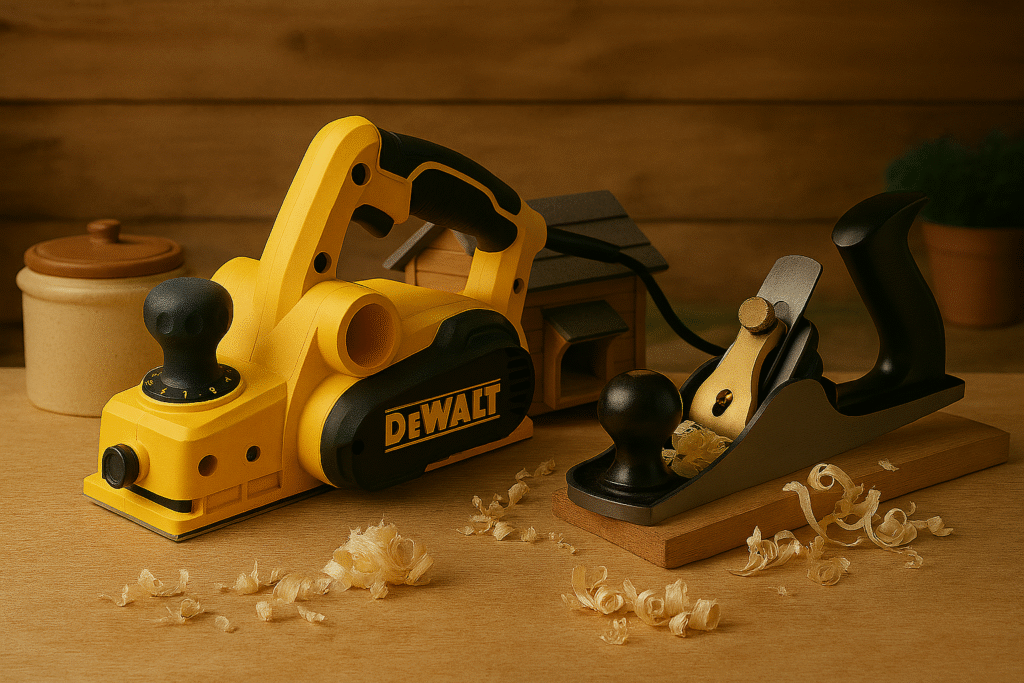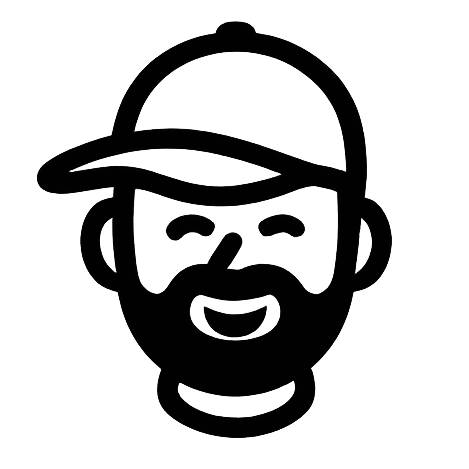Which Should You Choose?

When it comes to tackling DIY projects, every tool has its time and place. The age-old debate of power tools vs. hand tools is less about which is “better” and more about which is “better for the job.” Think of it like this: a power tool is your sprint, fast and efficient; a hand tool is your marathon, precise and steady. A good toolbox usually has both.
Why Power Tools Shine
Power tools are the muscle of the workshop. They run on electricity, batteries, or compressed air and can handle tough jobs in a fraction of the time.
Advantages:
- Speed & Efficiency – Cut a board in seconds instead of minutes.
- Consistency – Every cut, drill, or fasten can be nearly identical.
- Less Physical Strain – Let the motor do the work, not your arms.
Best for:
- Framing walls
- Cutting lumber and sheet goods
- Driving hundreds of screws (hello, deck building!)
- Sanding large surfaces
Recommended Gear:
- Cordless Drill/Driver – A must-have for nearly every project.
- Circular Saw – The go-to for cutting wood quickly.
- Orbital Sander – Saves hours of arm-numbing sanding.
Why Hand Tools Still Matter
Before power tools, there were chisels, hammers, and hand planes—and they’re not going anywhere. Hand tools offer a level of control and finesse that machines can’t always match.
Advantages:
- Precision – Perfect for detailed carpentry and finish work.
- No Power Needed – Great for off-grid projects or when your battery dies.
- Quiet & Safer – Less noise, fewer kickbacks, and more control.
- Durability – A well-cared-for hand tool can last generations.
Best for:
- Fine woodworking and joinery
- Small home repairs
- Tight spaces where power tools won’t fit
- Those “just one screw” jobs
Recommended Gear:
- Quality Screwdriver Set – Never underestimate the power of a good grip.
- Hand Saw – Ideal for small cuts without dragging out a saw and extension cord.
- Chisel Set – Perfect for woodworking details and clean adjustments.
The Balanced Toolbox
The real secret? Use both. Power tools give you speed; hand tools give you control. Together, they make your DIY life easier, faster, and more satisfying.
Think of power tools as your high-performance pickup truck and hand tools as the trusty pocketknife you always carry. Both are indispensable—you just wouldn’t want to build a house with only one.
Final Tip
If you’re just starting your tool collection, begin with a mix of essentials: a cordless drill, a circular saw, a screwdriver set, and a good hammer. Over time, add specialty tools as your projects grow.
👉 Pro Tip: Always buy the best quality you can afford. A solid hand plane or a reliable drill will outlast the bargain-bin version by years.
